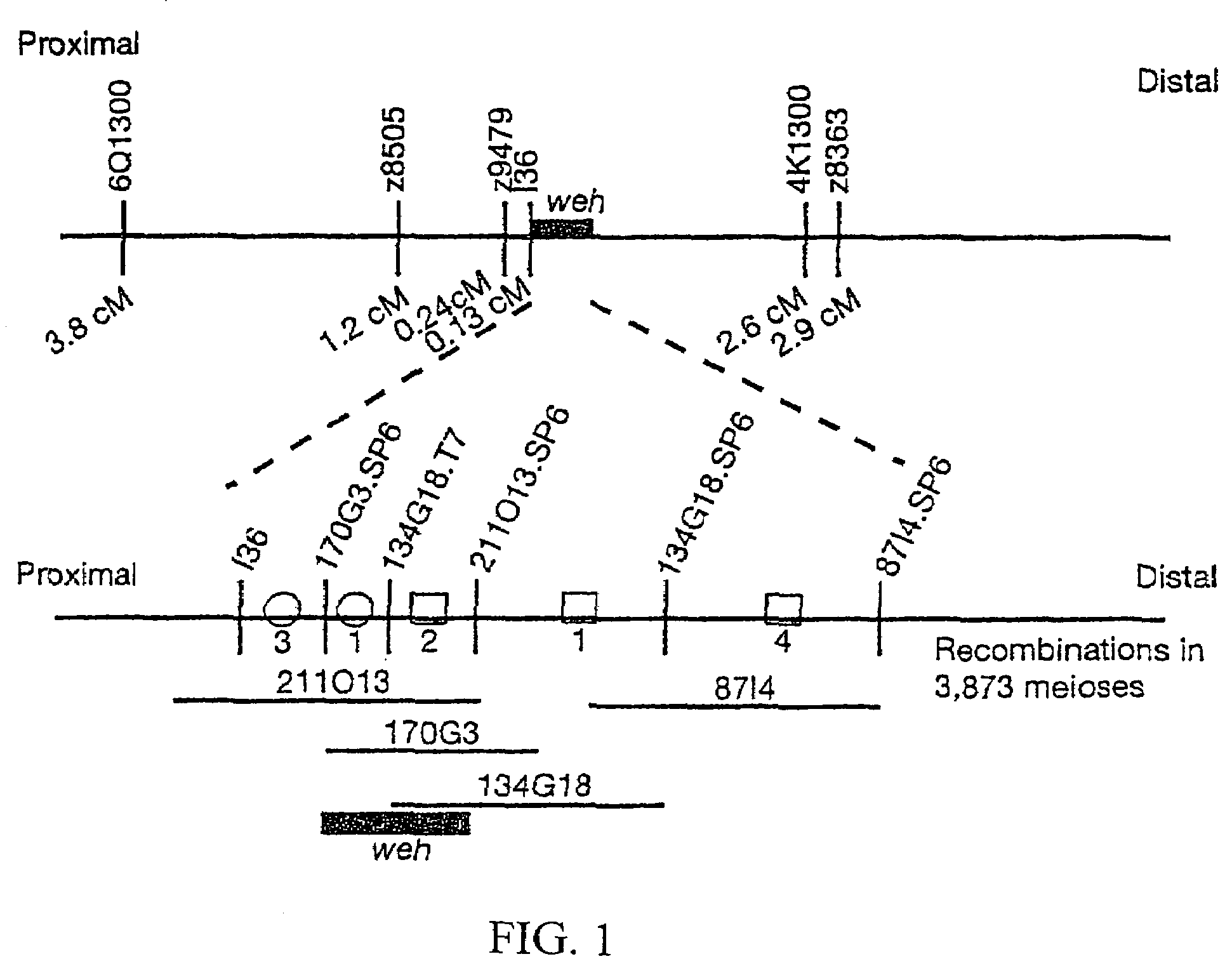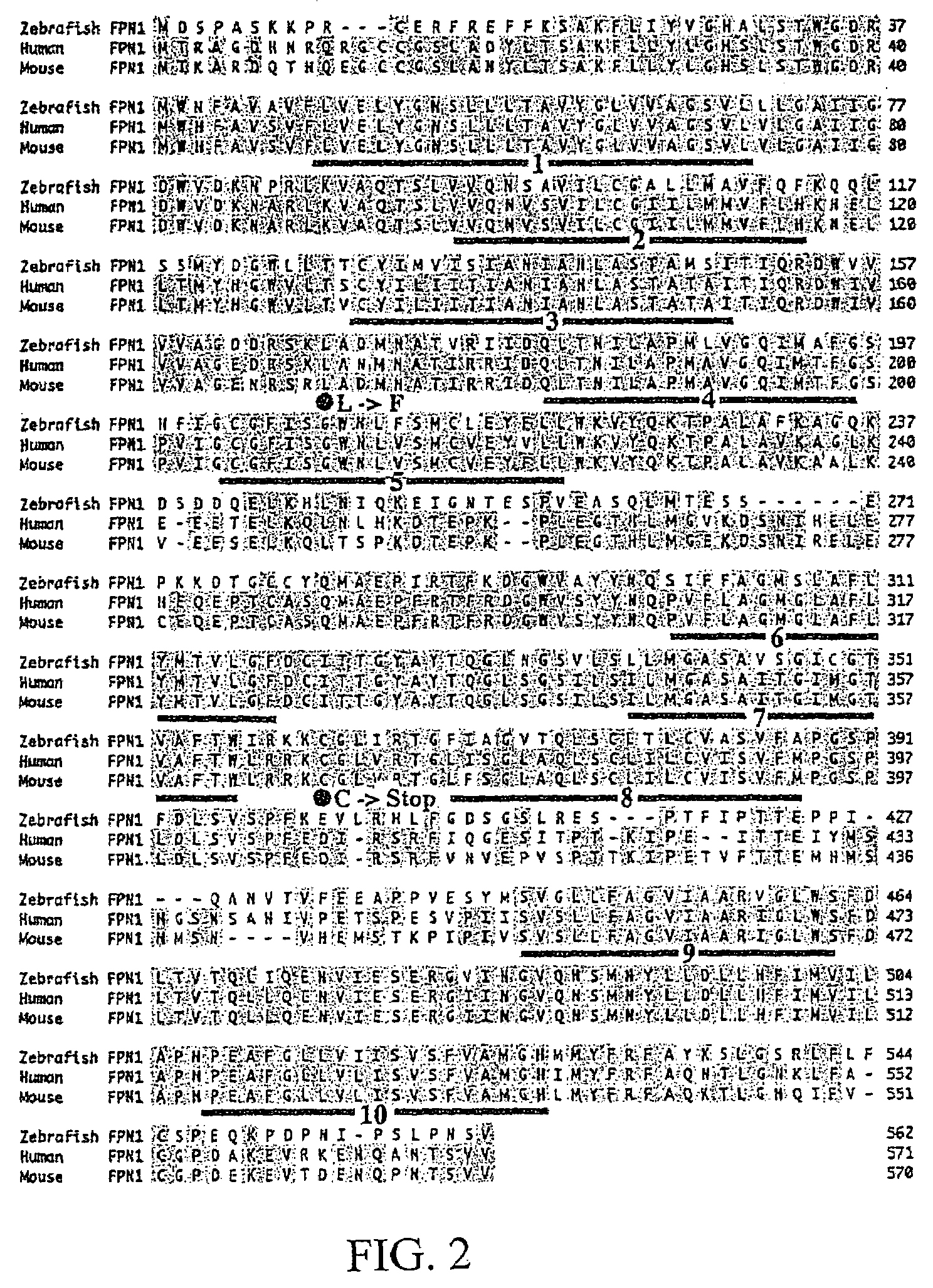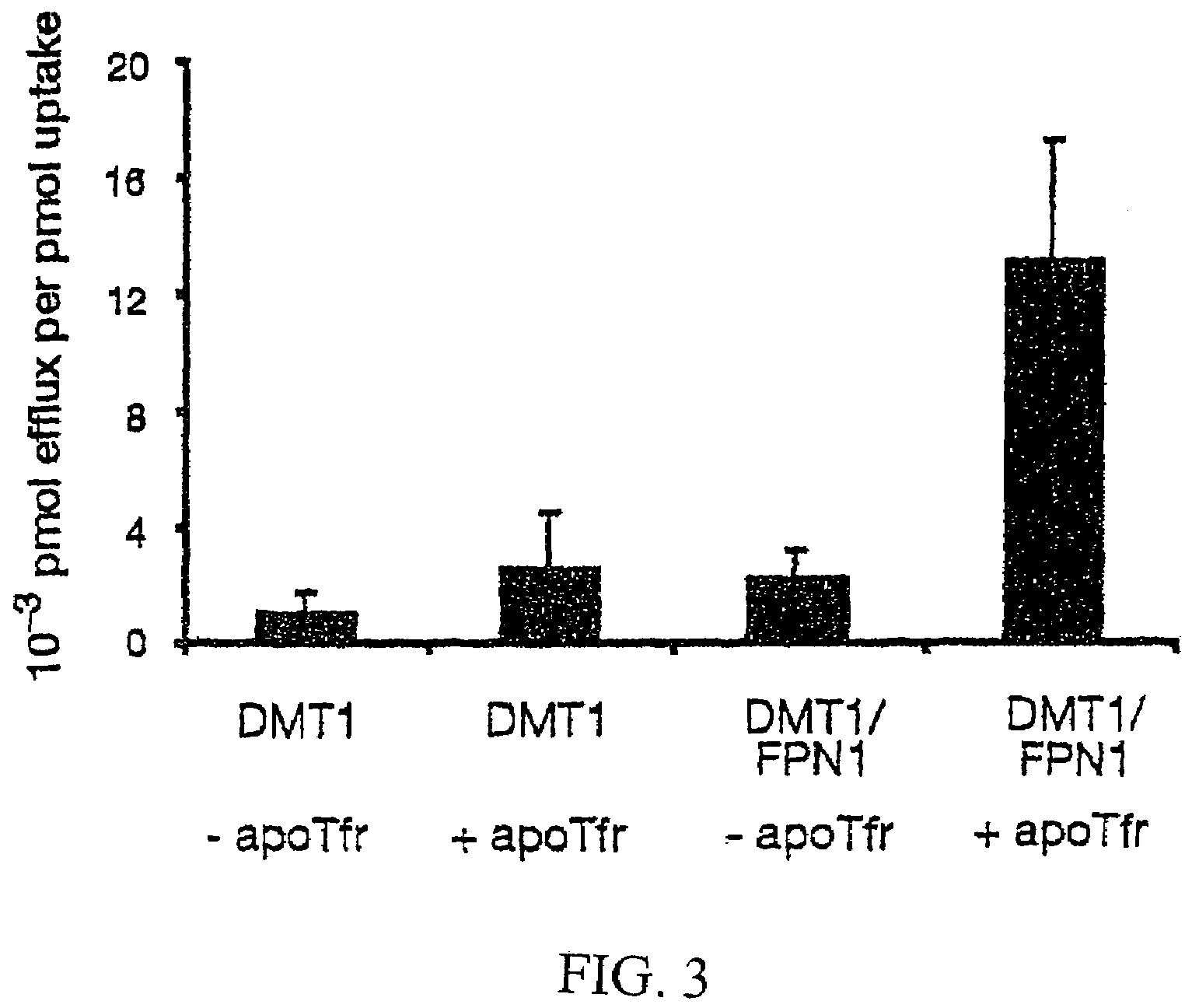Ferroportin1 nucleic acids and proteins
a technology of ferroportin and nucleic acids, applied in the field of ferroportin1 nucleic acids and proteins, can solve problems such as iron deficiency and overload disorders, and achieve the effect of enhancing iron expor
- Summary
- Abstract
- Description
- Claims
- Application Information
AI Technical Summary
Benefits of technology
Problems solved by technology
Method used
Image
Examples
example 1
Observations on Weissherbst Zebrafish Mutants
[0129]Two independent autosomal recessive mutations of the zebrafish hypochromic blood mutant weissherbst (weh), wehth238 and wehtp8c5, were isolated as part of a large-scale screen for ethyl nitroso urea (ENU) induced mutations that disrupt embryonic development in zebrafish (Haffter, P., et al., Danio rerio. Development, 123:1–36, 1996). These weh mutants were identified in a morphologic screen for defects in circulating erythroid cells (Ransom, D. G., et al., Development, 123:311–319, 1996). While the number of circulating erythroid cells of both mutant alleles are normal at 33 and 48 hours post fertilization (hpf), the weh mutant cells are hypochromic (lacking red color). Mutant embryos show little, if any, hemoglobin compared to wild-types at 33 hpf and 48 hpf (by o-dianisidine staining), but some hemoglobin is detectable at 72 hpf. The wehth238 allele has less o-dianisidine staining compared to the wehtp85c allele at 72 hpf, suggest...
example 2
[0131]To gain further insight into this phenotype, we isolated the weh mutant gene by positional cloning methods. Study of the segregation of centromeric microsatellite markers in half-tetrad gynogenetic diploid embryos localized weh to linkage group 9. Genetic mapping placed the weh locus in an approximately 6 cM interval between the random amplified polymorphic DNA (RAPD) markers 4K1300 and 6Q1300 (FIG. 1). We isolated more closely linked markers using amplified fragment length polymorphism (AFLP) analysis (Ransom, D. G., et al., pp. 195–210 in The Zebrafish: Genetics and Genomics, eds. Detrich, H. W. L., Westerfield, M. & Zon, L. I., Academic, San Diego, 1999; Vos. P., et al., Nucleic Acids Res., 23:4407–4414, 1995), scanning approximately 10,000 polymorphic loci. Single strand conformational polymorphism (SSCP) analysis showed that the AFLP marker 136 was 0.13 cM proximal to the weh locus (FIG. 1).
[0132]A chromosomal walk towards the gene was initiate...
example 3
Expression of Ferroportin1
[0134]In situ hybridization analysis of zebrafish embryos shows that ferroportin1 mRNA is not expressed in erythroid cells. Ferroportin1 mRNA is detected at 18 hpf through 48 hpf in the yolk syncytial layer (YSL). The YSL is the peripheral layer of the yolk cell that lies just below the membrane (Kimmel, C. B., et al., Dev. Dyn., 203:253–310, 1995). This layer surrounds the entire yolk of the embryo and consists of yolk-free cytoplasm and nuclei. Yolk has been shown to contain nutrients needed during development (Richards, M. P., Poult. Sci., 76:152–164, 1997), including iron (Richards, M. P., Poult. Sci., 76:152–164, 1997; Dumont, J. N., J. Exp. Zool., 204:193–217, 1978; Craik, J. C., Comp. Biochem. Physiol. A., 83:515–517, 1986). Embryos express ferroportin1 in the region of the YSL at 18 hpf that lies just below the developing hematopoietic cells in the intermediate cell mass (Al-Adhami, M. A., et al., Develop. Growth Differ., 19:171–179, 1977). At 48 hp...
PUM
| Property | Measurement | Unit |
|---|---|---|
| Tm | aaaaa | aaaaa |
| Tm | aaaaa | aaaaa |
| strand dissociation temperature | aaaaa | aaaaa |
Abstract
Description
Claims
Application Information
 Login to View More
Login to View More - R&D
- Intellectual Property
- Life Sciences
- Materials
- Tech Scout
- Unparalleled Data Quality
- Higher Quality Content
- 60% Fewer Hallucinations
Browse by: Latest US Patents, China's latest patents, Technical Efficacy Thesaurus, Application Domain, Technology Topic, Popular Technical Reports.
© 2025 PatSnap. All rights reserved.Legal|Privacy policy|Modern Slavery Act Transparency Statement|Sitemap|About US| Contact US: help@patsnap.com



